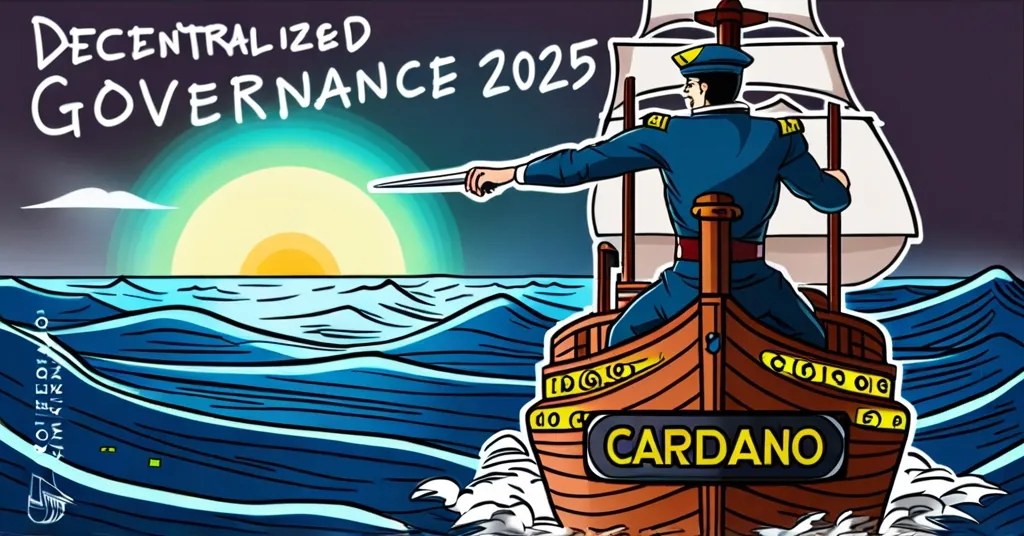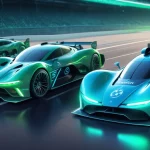Charles Hoskinson’s Final Push: Cardano Aims for Decentralized Governance by 2025

I Won’t Be Derailed: Charles Hoskinson Lays Out Final Mission for Cardano
Charles Hoskinson, the visionary behind Cardano, is committed to guiding the blockchain platform towards a fully decentralized governance model by 2025. Despite facing criticism and market volatility, Hoskinson’s resolve remains unshaken as Cardano enters the “Age of Voltaire,” a phase focused on empowering the community with governance.
- Charles Hoskinson’s unwavering commitment to decentralized governance by 2025
- Cardano’s 2024 milestones: Plutus V3, Midnight, and Chang hard fork
- Significant increase in smart contract deployments
- Midnight protocol’s potential to unlock $20 trillion in crypto assets
- Internal and external criticism and market performance challenges
Cardano’s journey into the “Age of Voltaire” marks a significant shift towards community-driven governance. This phase, named after the enlightenment philosopher, emphasizes the importance of community involvement in decision-making. Hoskinson believes that decentralization is the ultimate goal, and he’s not letting anything stand in the way. “For those who know me well, this statement is nothing new… I’ve spent ten years of my life on Cardano. Many mistakes were made, but I never crossed lines for a cash grab from the community or deviated from the original roadmap,” he asserts. His dedication is further underscored by his vow, “My last duty is to remove any roadblock for this transition. There is no way in hell anyone or anything is going to derail that process.”
The year 2024 has been a pivotal one for Cardano, with several key updates launched. Plutus V3, the latest version of Cardano’s smart contract platform, has enabled more complex transactions and smart contract capabilities. This update has led to a significant leap in smart contract deployments, from 8,083 at the start of the year to about 105,500 by year’s end. Additionally, the introduction of the Midnight protocol, which utilizes zero-knowledge proofs (ZKPs) to enhance privacy, aims to unlock a staggering $20 trillion in crypto assets currently restricted by regulatory barriers. Midnight’s potential is as exciting as it is ambitious, promising to revolutionize how privacy is handled in blockchain transactions.
However, not all updates have been met with universal acclaim. The Chang hard fork, which introduced Delegate Representatives (DReps) to Cardano’s governance model, has stirred internal dissent. A recent community poll revealed that 43% of respondents expressed dissatisfaction with Hoskinson’s leadership. This dissatisfaction is compounded by external criticism, such as a Forbes article labeling ADA as a “zombie crypto,” questioning Cardano’s market cap relative to its actual usage.
Cardano’s market performance has also been a rollercoaster, with ADA’s price fluctuating from $0.34 to $0.85 over the year. The total value locked (TVL) in Cardano’s DeFi ecosystem dropped from $700 million to $478 million, reflecting the challenges of market volatility. While Cardano continues to innovate, the crypto market remains unpredictable, testing the resilience of even the most promising projects.
Looking ahead, Cardano’s future hinges on the successful implementation of decentralized governance. The “Age of Voltaire” will also involve the approval of Cardano’s constitution and budget, further solidifying the community’s role in decision-making. The development of Hydra, Cardano’s layer-2 scaling solution, is another critical component. Hydra aims to improve transaction speed and reduce network congestion, ensuring Cardano can handle increased usage as it grows.
Despite the challenges, Cardano’s potential remains vast. The Midnight protocol could position Cardano as a leader in privacy-focused blockchain solutions, addressing regulatory challenges head-on. As Cardano navigates these choppy waters, its commitment to decentralization, privacy, and innovation continues to drive its mission forward.
Yet, it’s important to consider the potential hurdles. Achieving true decentralization is no easy feat, and community-driven governance can lead to decision-making paralysis. Moreover, while Cardano’s technological advancements are impressive, the crypto space is highly competitive, with other blockchains like Ethereum also pushing the envelope in smart contracts and DeFi.
Cardano’s journey is emblematic of the broader crypto landscape: filled with promise, innovation, and no shortage of challenges. As the platform moves towards its 2025 goal, it’s a testament to the relentless spirit of those who believe in the transformative power of blockchain technology.
Key Questions and Takeaways
- What is Charles Hoskinson’s final mission for Cardano?
Charles Hoskinson’s final mission is to ensure Cardano transitions to a decentralized governance model by 2025.
- What significant updates has Cardano undergone in 2024?
In 2024, Cardano launched Plutus V3 for smart contracts, introduced the Midnight protocol for privacy, implemented the Chang hard fork for governance changes, and continued development on Hydra for scaling.
- What is the Midnight protocol, and what is its potential impact?
The Midnight protocol aims to enhance privacy on Cardano using zero-knowledge proofs (ZKPs), with the potential to unlock $20 trillion in crypto assets currently restricted by regulatory barriers.
- How has the Cardano community responded to Charles Hoskinson’s leadership?
The Cardano community has shown mixed reactions, with 43% expressing dissatisfaction with Hoskinson’s leadership in a poll, amid internal and external criticism.
- What has been the impact of market volatility on Cardano’s ADA token?
ADA’s price has been volatile, dropping to $0.34 and then recovering to $0.85, while the total value locked in DeFi on Cardano decreased from $700 million to $478 million over the year.



